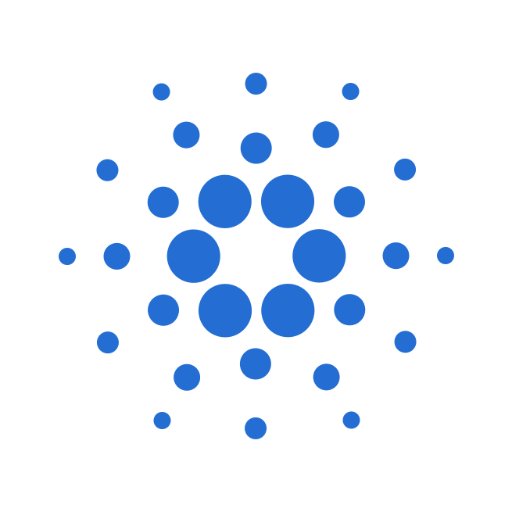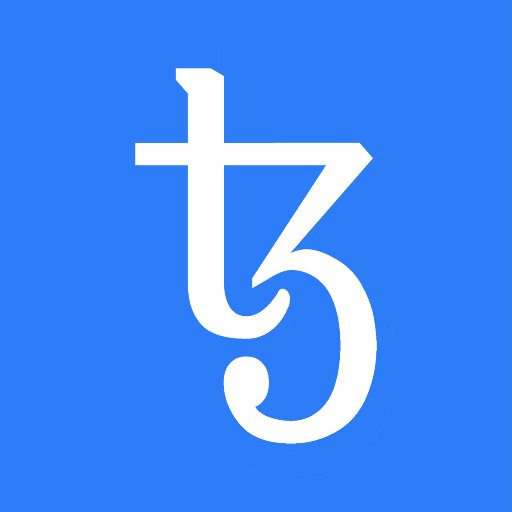Cardano (ADA) 대 Tezos (XTZ) 비교 Coin
Like never before, the world of cryptocurrency is witnessing a rising tide of competition playing out in various dimensions, especially between Cardano (ADA) and Tezos (XTZ). This article will delve into a comprehensive comparison between these two dominant forces in the digital currency universe, focusing on their primary attributes, technological edge, and trade-offs. Our aim is to arm prospective investors and technology enthusiasts with balanced insight for a more informed decision.
User rating
Cryptogeek rating
소개
|
카르 다노 코인 (ADA)은 2017 년에 출시 된 암호 화폐입니다. 통화는 카르 다노 네트워크를 기반으로합니다. 개발자 팀의 리더는 Cardano가 출시되기 전에 Ethereum 및 BitShares에서 근무한 경험이 풍부한 개발자 인 Charles Hoskinson입니다. Cardano는 학술적으로 검토 된 공개 소스 코드를 사용한 최초의 암호 화폐이므로이 프로젝트는 매우 독특합니다. Cardano의 합의 알고리즘은 Proof-of-Stake입니다. Cardano는 일반적으로 높은 수준의 보안 및 빠른 거래로 칭찬받습니다. 카르 다노 통화는 빠르게 가치를 얻었으며 시가 총액으로 10 대 암호 화폐 중 하나가되었습니다.
|
Tezos는 자체 블록 체인과 기본 토큰 (Tezos, XTZ)을 갖춘 스마트 계약 플랫폼입니다. 거버넌스는 Proof-of-Stake 알고리즘을 통해 수행됩니다. 이는 이해 관계자 (최소 10,000 XTZ를 소유 한 사람)가 프로토콜 변경에 투표한다는 의미입니다. 이 유효성 검사기 ( "베이커")는 유효성 검사 성능에 대한 보상을받습니다. 보상은 인플레이션을 통해 생성됩니다. XTZ를 베이커에게 위임하는 사람들도 수입을 올릴 수 있습니다. Tezos에는 내장 된 "자체 수정"메커니즘이있어 포크를 만들지 않고도 네트워크를 구성 할 수 있습니다. 커뮤니티를 통합하고 개발 프로세스를보다 쉽게 만듭니다.
|
종류
설립
국가
언어
팀
프로토콜
|
Public blockchain
|
Public blockchain
|
시가 (USD)
사상 최고치
가격 변화
용량 (24시)
|
122523386.89541
|
6597115.12445
|
해시레이트
최대 공급
|
45000000000.00000
|
데이터가 없습니다
|
총 공급
유통량
|
45000000000.00000
|
1075998107.47170
|
거래 속도/블록 시간
수수료
채굴의 수익성
연산
증명 유형
완전 선광
스마트 계약 주소
채굴 된 총 코인
|
25927070538.00000
|
810904882.00580
|
거래 중입니다
블록 보상
|
0.000000000000
|
0.000000000000
|
블록 시간
| 사업 |
|
|
| User rating |
User rating
4.3 / 5
사용자 리뷰 7 개
|
User rating
4.5 / 5
사용자 리뷰 4 개
|
| Cryptogeek rating |
Cryptogeek rating
3.8 / 5
|
Cryptogeek rating
3.4 / 5
|
| 신뢰 점수
운영 방법
|
신뢰 점수
4.39 / 5
|
신뢰 점수
4.08 / 5
|
| 소개 |
카르 다노 코인 (ADA)은 2017 년에 출시 된 암호 화폐입니다. 통화는 카르 다노 네트워크를 기반으로합니다. 개발자 팀의 리더는 Cardano가 출시되기 전에 Ethereum 및 BitShares에서 근무한 경험이 풍부한 개발자 인 Charles Hoskinson입니다. Cardano는 학술적으로 검토 된 공개 소스 코드를 사용한 최초의 암호 화폐이므로이 프로젝트는 매우 독특합니다. Cardano의 합의 알고리즘은 Proof-of-Stake입니다. Cardano는 일반적으로 높은 수준의 보안 및 빠른 거래로 칭찬받습니다. 카르 다노 통화는 빠르게 가치를 얻었으며 시가 총액으로 10 대 암호 화폐 중 하나가되었습니다.
|
Tezos는 자체 블록 체인과 기본 토큰 (Tezos, XTZ)을 갖춘 스마트 계약 플랫폼입니다. 거버넌스는 Proof-of-Stake 알고리즘을 통해 수행됩니다. 이는 이해 관계자 (최소 10,000 XTZ를 소유 한 사람)가 프로토콜 변경에 투표한다는 의미입니다. 이 유효성 검사기 ( "베이커")는 유효성 검사 성능에 대한 보상을받습니다. 보상은 인플레이션을 통해 생성됩니다. XTZ를 베이커에게 위임하는 사람들도 수입을 올릴 수 있습니다. Tezos에는 내장 된 "자체 수정"메커니즘이있어 포크를 만들지 않고도 네트워크를 구성 할 수 있습니다. 커뮤니티를 통합하고 개발 프로세스를보다 쉽게 만듭니다.
|
| 종류 |
종류
coin
|
종류
coin
|
| 설립 |
설립
2017
|
설립
2016
|
| 국가 |
국가
International
|
국가
USA
|
| 언어 |
언어
데이터가 없습니다
|
언어
데이터가 없습니다
|
| 팀 |
팀
Public
|
팀
Public
|
| 프로토콜 |
프로토콜
Public blockchain
|
프로토콜
Public blockchain
|
| 시가 (USD) |
시가 (USD)
0.8958
|
시가 (USD)
0.8211
|
| 사상 최고치 |
사상 최고치
1.3300
|
사상 최고치
4.4600
|
| 가격 변화 |
가격 변화
-2.20
|
가격 변화
-4.58
|
| 용량 (24시) |
용량 (24시)
122523386.89541
|
용량 (24시)
6597115.12445
|
| 해시레이트 |
해시레이트
데이터가 없습니다
|
해시레이트
데이터가 없습니다
|
| 최대 공급 |
최대 공급
45000000000.00000
|
최대 공급
데이터가 없습니다
|
| 총 공급 |
총 공급
데이터가 없습니다
|
총 공급
데이터가 없습니다
|
| 유통량 |
유통량
45000000000.00000
|
유통량
1075998107.47170
|
| 거래 속도/블록 시간 |
거래 속도/블록 시간
50
|
거래 속도/블록 시간
15
|
| 수수료 |
수수료
데이터가 없습니다
|
수수료
데이터가 없습니다
|
| 채굴의 수익성 |
채굴의 수익성
high
|
채굴의 수익성
medium
|
| 연산 |
연산
Ouroboros
|
연산
데이터가 없습니다
|
| 증명 유형 |
증명 유형
PoS
|
증명 유형
DPoS
|
| 완전 선광 |
완전 선광
데이터가 없습니다
|
완전 선광
데이터가 없습니다
|
| 스마트 계약 주소 |
스마트 계약 주소
데이터가 없습니다
|
스마트 계약 주소
데이터가 없습니다
|
| 채굴 된 총 코인 |
채굴 된 총 코인
25927070538.00000
|
채굴 된 총 코인
810904882.00580
|
| 거래 중입니다 |
거래 중입니다
yes
|
거래 중입니다
yes
|
| 블록 보상 |
블록 보상
0.000000000000
|
블록 보상
0.000000000000
|
| 블록 시간 |
블록 시간
데이터가 없습니다
|
블록 시간
데이터가 없습니다
|
소셜
웹사이트
트위터
장점
|
Friendly
Peer-reviewed technology
Scalable
|
Has impressive on-chain governance
Self-amending blockchain
Secure smart contract programming language
|
약점
|
Competitors in the same space
Still in development
Multiple chains
|
ICO was followed by delays
Young ledger
High-risk investment
|
평가
| User rating |
User rating
4.3 / 5
사용자 리뷰 7 개
|
User rating
4.5 / 5
사용자 리뷰 4 개
|
| Cryptogeek rating |
Cryptogeek rating
3.8 / 5
|
Cryptogeek rating
3.4 / 5
|
| 장점 |
장점
Friendly
Peer-reviewed technology
Scalable
|
장점
Has impressive on-chain governance
Self-amending blockchain
Secure smart contract programming language
|
| 약점 |
약점
Competitors in the same space
Still in development
Multiple chains
|
약점
ICO was followed by delays
Young ledger
High-risk investment
|
Cardano (ADA) 사용자 평가는 7 개의 사용자 리뷰를 기준으로 4.3 입니다. Tezos (XTZ) 사용자 평가는 4 사용자 리뷰를 기반으로 4.5 입니다.
We also calculate the special Cryptogeek TrustScore based on the characteristics of each coin.
|
우리는 우리의 신뢰 점수 평가를 기준으로 우승자를 선정합니다.
어느 회사를 선택할 것인지는 아직 여러분에게 달려 있습니다!
신뢰 점수를 계산된 방밥?
|
|
|
다른 회사를 선택해 주십시오
In conclusion, there's no definitive verdict on whether Cardano (ADA) or Tezos (XTZ) is superior as both digital currencies present distinct virtues and have their unique areas of expertise. The choice between them largely depends on the individual investor's goals, risk appetite and perspective on their future developments. Hence, understanding the nuances, as laid out in this comparison, forms the bedrock of a more informed investment decision. Stay updated, stay invested, and stay informed!
Like never before, the world of cryptocurrency is witnessing a rising tide of competition playing out in various dimensions, especially between Cardano (ADA) and Tezos (XTZ). This article will delve into a comprehensive comparison between these two dominant forces in the digital currency universe, focusing on their primary attributes, technological edge, and trade-offs. Our aim is to arm prospective investors and technology enthusiasts with balanced insight for a more informed decision.

